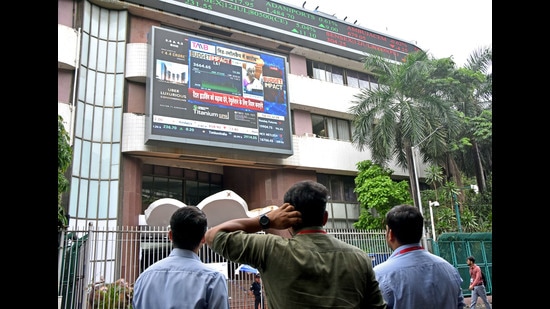Jul 24, 2024 12:12 PM IST
From 35,000 feet, the Budget 2024 story is this: The government will continue to tax the top 10% of the population heavily
Budget 2024 came at a rare moment in the history of Indian budgets. Tax revenues are up, bank and corporate balance sheets are cleaned up, reserves are looking good and a surprise bonus from the Reserve Bank of India has bolstered the ability of the government to spend without compromising the fiscal consolidation process. But there are two clouds on the horizon — slowing consumption growth and tepid private sector investment. There was a third issue in front of the government — the middle class wanted a break from the increased taxation it has faced over the years. While Budget 2024 has not addressed all these issues to everybody’s satisfaction, it has started the walk on the path that does.

The lower end of the middle class has got a tax break with the tax slabs and standard deduction going up in the new tax regime. Slab levels are up by a lakh up to the ₹12 lakh slab level. Standard deduction is up from ₹50,000 to ₹75,000. The total benefit of these changes is a maximum of ₹17,500 for the taxpayer. The old tax regime under which people can claim a multitude of deductions saw no change.
The big changes have been in the capital gains space. Capital gains, or profits from assets, are taxed differently depending on how you hold and for how long you hold them. It is messy and complicated. A promise has been made to clean it up and the direction seems to have been set. As suggested in an earlier column in these pages (https://www.hindustantimes.com/opinion/eat-the-rich-but-do-it-in-a-logical-way-101719846246923.html), the direction is to standardise the rates and the holding periods eventually. In this process, listed stocks and equity mutual funds have been hit by an increase in both the short- and long-term capital gains tax which now stand at 20% and 12.5%, up from 15% and 10%, respectively. Looking out for the small investor, the tax-exempt profit has been hiked from ₹1 lakh to ₹1.25 lakh in a year.
Real estate has both won and lost. Its long-term rate has dropped from 20% to 12.5%, but it has lost the indexation benefit. Indexation allows the investor to inflation-adjust the buying price thereby reducing the profit and hence the taxation. Debt fund profits continue to be taxed at slab rate but there is a window till April 1, 2026, to rethink this and standardise the rates with other asset classes.
The government and regulators are worried about the runaway futures and options (F&O) market that might be causing the tail to wag the dog. The worry is that large hedge funds with smart algorithms and technology are earning millions of dollars sitting outside the country at the cost of the tiny Indian retail investor who sees the F&O market as a casino and is losing money.
The securities transaction tax (STT) has been hiked on both futures and options to dampen the interest. More steps are awaited from the Securities and Exchange Board of India to put in place a framework that is fair and discourages investors from unsuitable products while allowing the F&O market to hedge the risks as is its primary mandate.
The worry of economists that India is in a phase of jobless growth found place in the budget that had a slew of proposals to boost jobs. Mostly aimed at first time workers, the government is willing to spend money to move people into formal employment as reflected in the Employees Provident Fund Organisation (EPFO) employment numbers. But there are lots of hoops to jump through before this money will be given. One of which is that the employee must go through a financial literacy course before she can claim the next instalment of a promised handout! Another route is to nudge the top 500 companies to hire interns for a year with the government paying for most of the cost, with the cost of training and 10% of the stipend coming from the firm’s Corporate Social Responsibility money. This is a voluntary scheme for companies. It might be a good idea for those firms who find it difficult to get skilled workers — an incentive scheme like this might allow them the runway to find, train and then hire these workers.
From 35,000 feet, the Budget 2024 story is this: The government will continue to tax the top 10% of the population heavily. It will tax assets and income and luxury goods and services. Despite a big middle class push this year for tax breaks, the government has not blinked — it might pay a political price, but that is five years later. The government is going to continue on the prudent path of sensible borrowing — this means keeping deficits gliding down and spending borrowed money largely on capital investment.
It has taken note of the issue of jobs and is trying to incentivise the private sector to hire more and the workers to go to work. So, the big picture looks good, but it is the details that will tell the real story.
Monika Halan is the author of the Let’s Talk Money book series.The views expressed are personal


